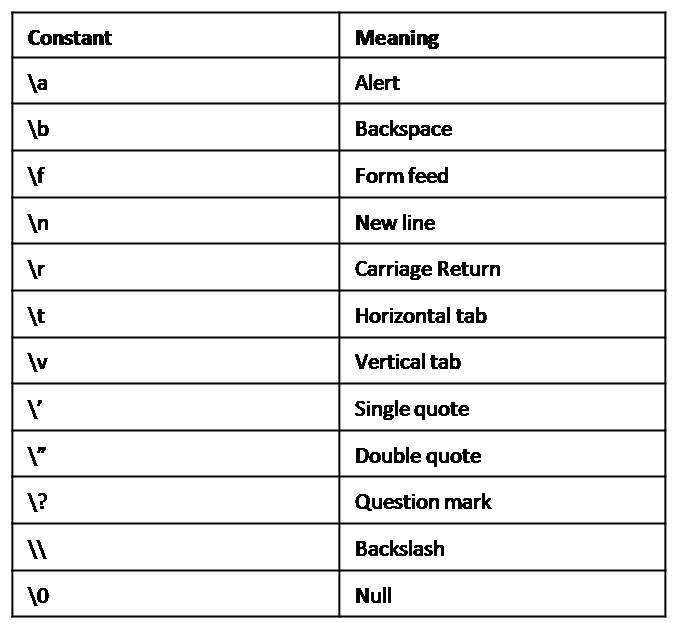

- #C language ansi escape sequences software#
- #C language ansi escape sequences iso#
- #C language ansi escape sequences plus#
- #C language ansi escape sequences series#
Both systems quickly fell into disuse, but ECMA-48 does mark the extensions used in them as reserved. The two systems share many escape codes with the ANSI system, with extensions that are not necessarily meaningful to computer terminals. Related standards include ITU T.61, the Teletex standard, and the ISO/IEC 8613, the Open Document Architecture standard (mainly ISO/IEC 8613-6 or ITU T.416). A version is adopted as a Japanese Industrial Standard, as JIS X 0211.
#C language ansi escape sequences iso#
It is also adopted by ISO and IEC as standard ISO/IEC 6429.

ĮCMA-48 has been updated several times and is currently at its 5th edition, from 1991. Later, the US government stopped duplicating industry standards, so FIPS pub. In 1981, ANSI X3.64 was adopted for use in the US government by FIPS publication 86.
#C language ansi escape sequences software#
The popularity of these gradually led to more and more software (especially bulletin board systems and other online services) assuming the escape sequences worked, leading to almost all new terminals and emulator programs supporting them. Others included the Qume QVT-108, Televideo TVI-970, Wyse WY-99GT as well as optional "VT100" or "VT103" or "ANSI" modes with varying degrees of compatibility on many other brands. This model was very successful in the market, which sparked a variety of VT100 clones, among the earliest and most popular of which was the much more affordable Zenith Z-19 in 1979.

The first popular video terminal to support these sequences was the Digital VT100, introduced in 1978. In 1994, ANSI withdrew its standard in favor of the international standard. These two standards were merged into an international standard, ISO 6429. The ANSI X3L2 committee collaborated with the ECMA committee TC 1 to produce nearly identical standards. The name "ANSI escape sequence" dates from 1979 when ANSI adopted ANSI X3.64.

#C language ansi escape sequences series#
It was a continuation of a series of character coding standards, the first one being ECMA-6 from 1965, a 7-bit standard from which ISO 646 originates. The first standard in the series was ECMA-48, adopted in 1976. The ANSI standard attempted to address these problems by making a command set that all terminals would use and requiring all numeric information to be transmitted as ASCII numbers. In addition, many of these terminals required sending numbers (such as row and column) as the binary values of the characters for some programming languages, and for systems that did not use ASCII internally, it was often difficult to turn a number into the correct character. While the two terminals had identical functionality in this regard, different control sequences had to be used to invoke them.Īs these sequences were different for different terminals, elaborate libraries such as termcap ("terminal capabilities") and utilities such as tput had to be created so programs could use the same API to work with any terminal. The Hazeltine 1500 had a similar feature, invoked using ~, DC1 and then the X and Y positions separated with a comma.
#C language ansi escape sequences plus#
One example is the VT52 terminal, which allowed the cursor to be placed at an x,y location on the screen by sending the ESC character, a Y character, and then two characters representing numerical values equal to the x,y location plus 32 (thus starting at the ASCII space character and avoiding the control characters).


 0 kommentar(er)
0 kommentar(er)
